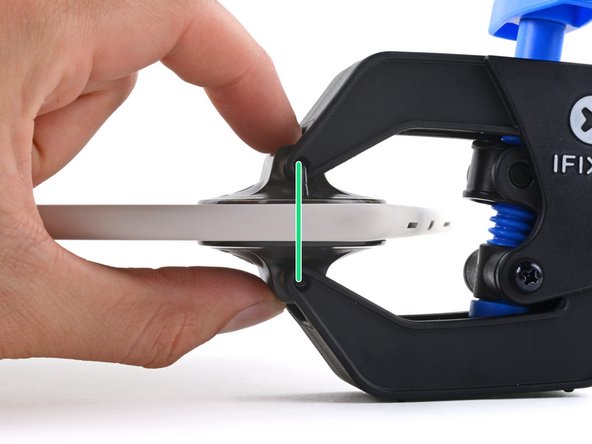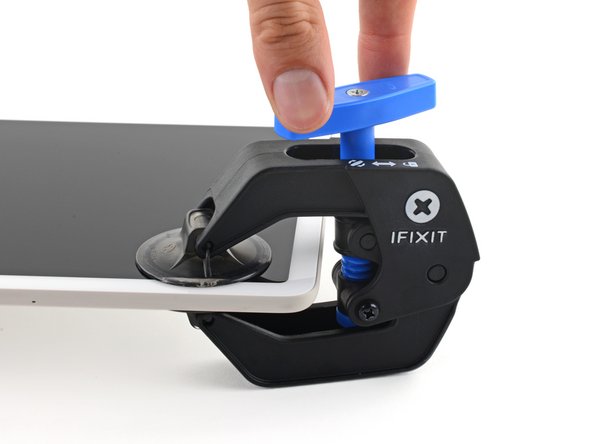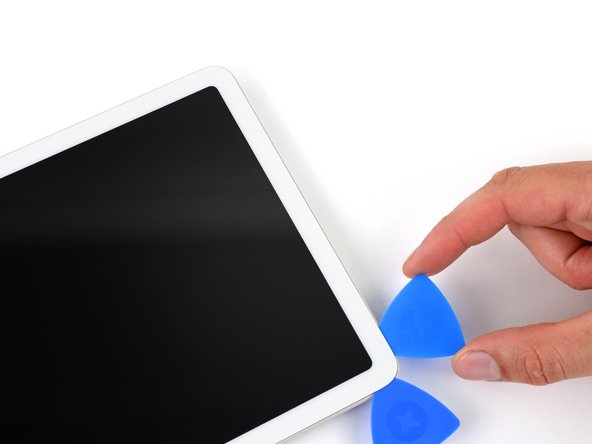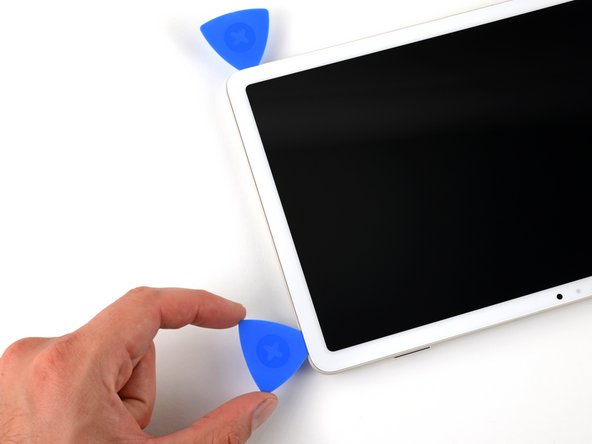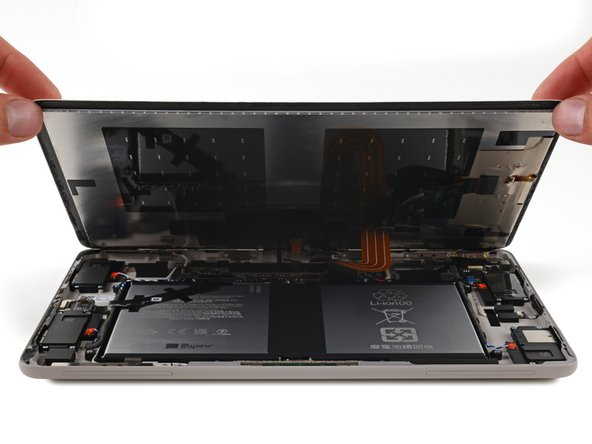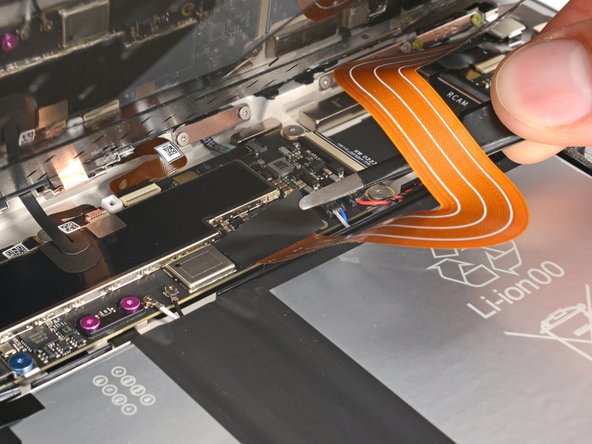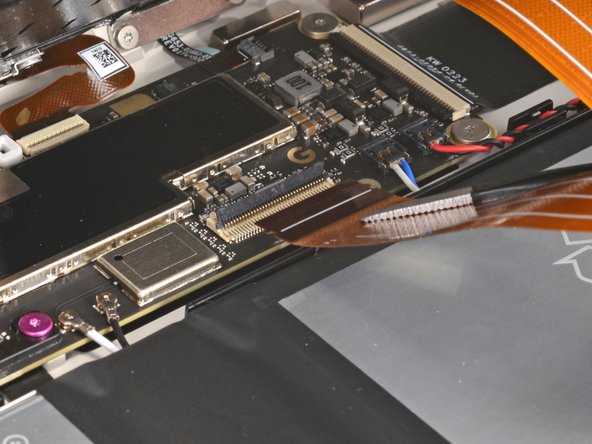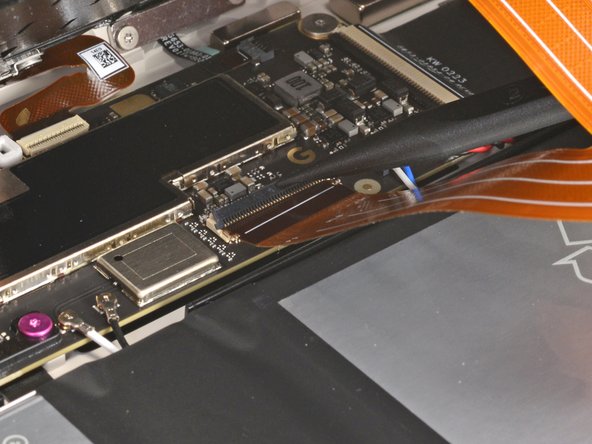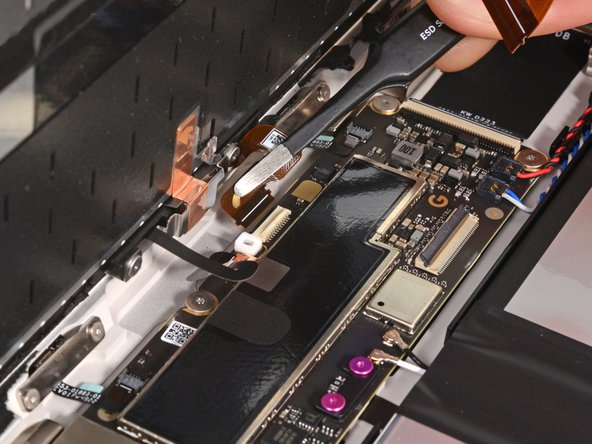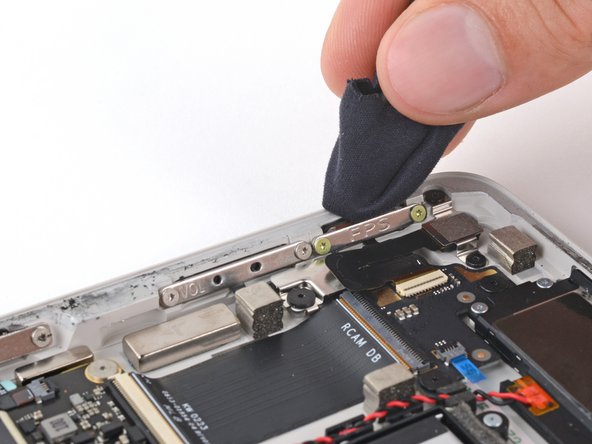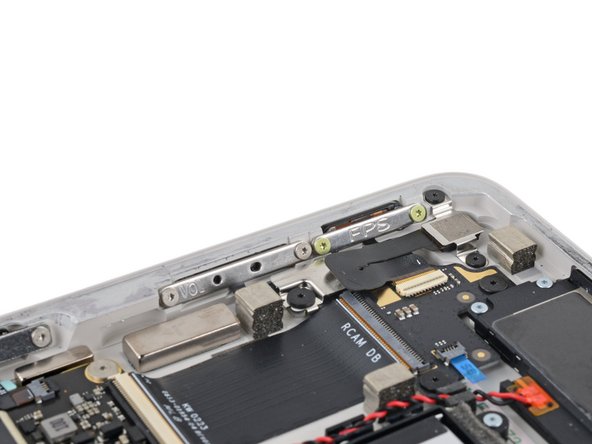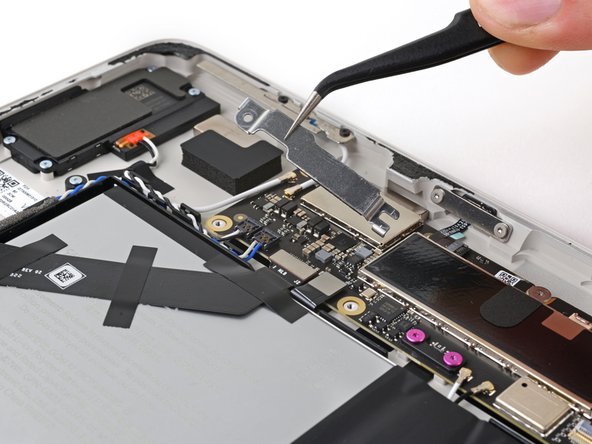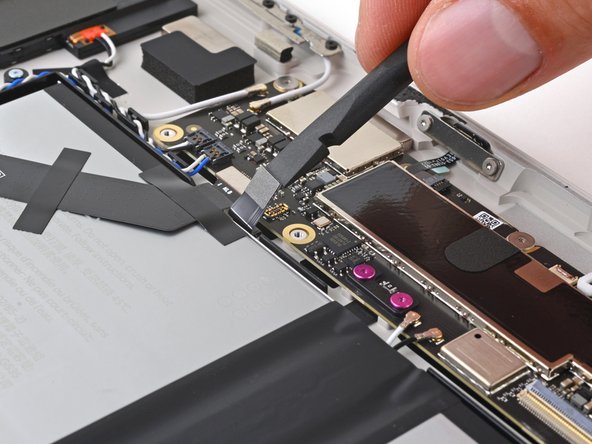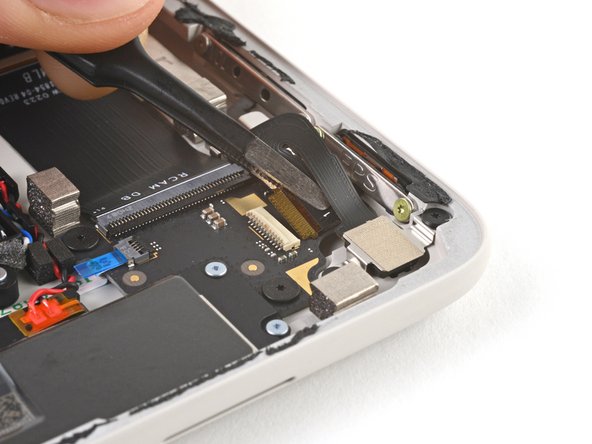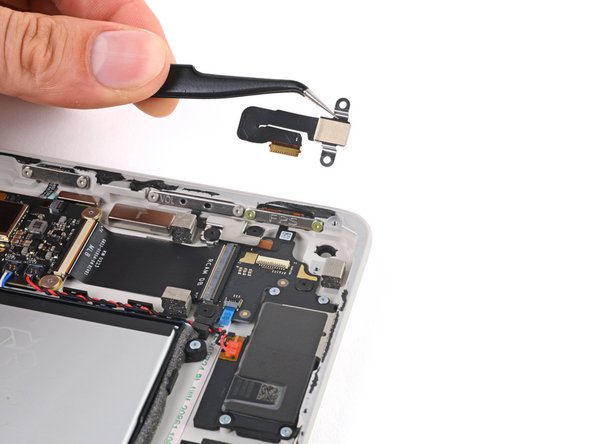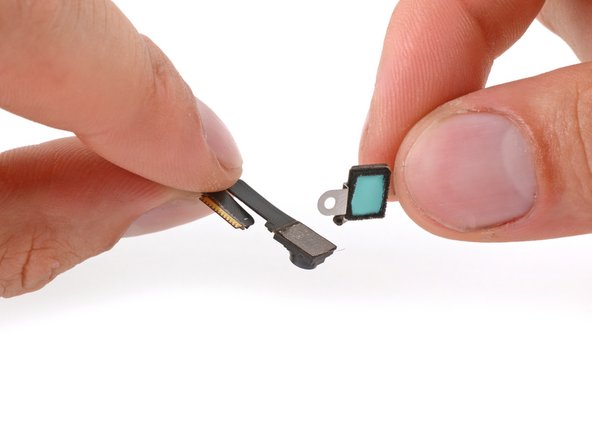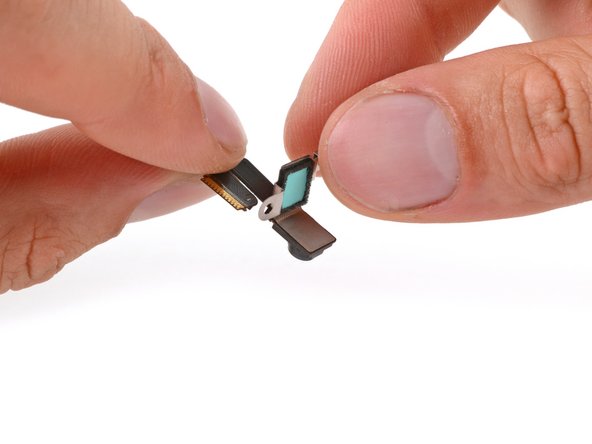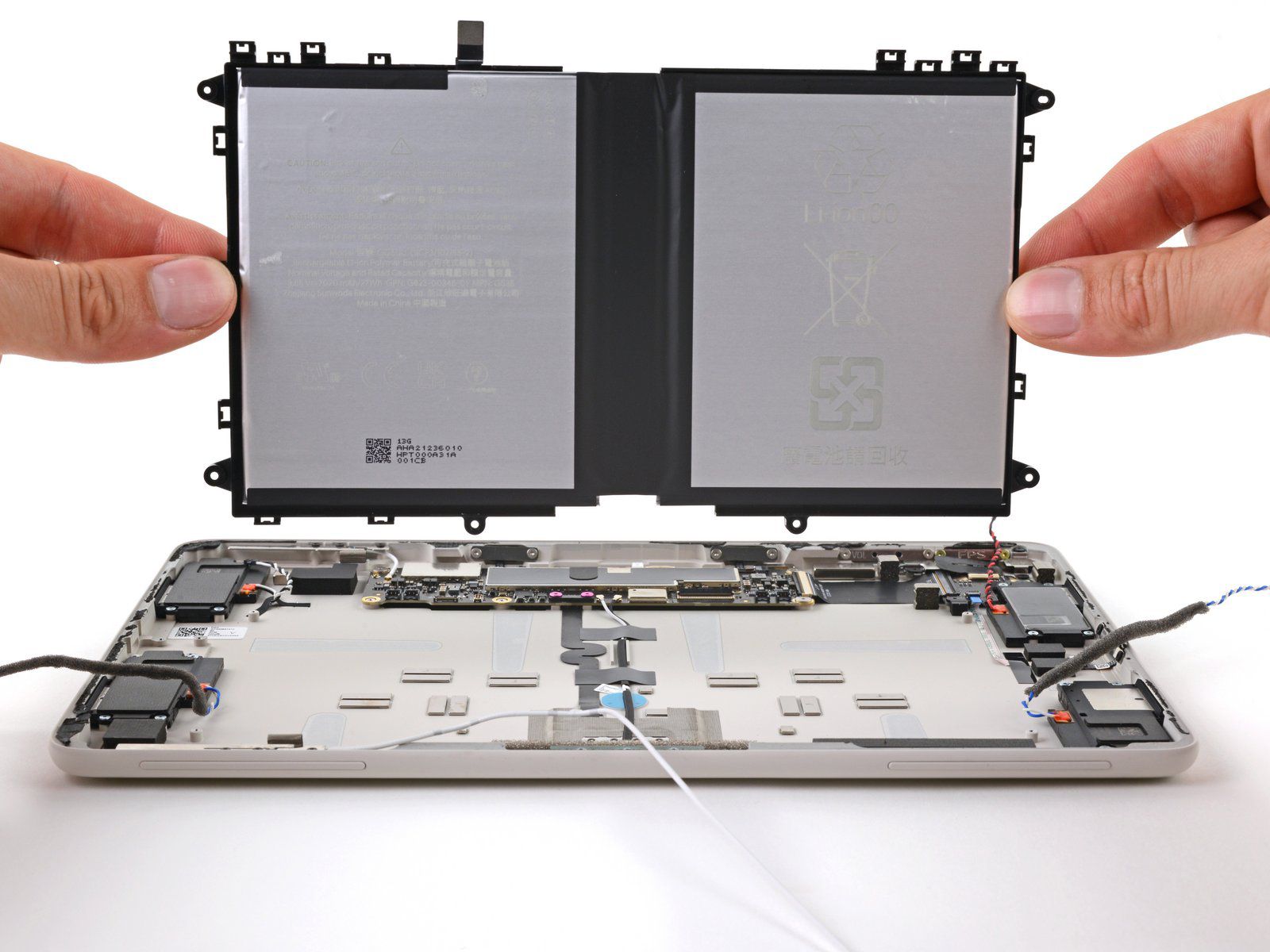Google Pixel Tablet Rear Camera Replacement
Duration: 45 minutes
Steps: 33 Steps
This repair guide comes straight from the experts at Salvation Repair, and while it’s packed with handy tips, it hasn’t received a thumbs up from any tech giants. Curious to know more about our repair guides? Check them out here!
Use this step-by-step guide to replace the rear camera in your Pixel Tablet. Before you get started, make sure you have some thin, double-sided tape – like Tesa 61395 Tape – to secure the screen and make the repair process smoother. If you’re not feeling confident, don’t worry – we’ve got you covered. If you need help, you can always schedule a repair with Salvation Repair.
Step 1
Let that battery run its course until it’s completely drained before diving into this repair! A battery that’s still charged can be a bit of a fire hazard if it gets damaged. Stay safe and smart!
Simultaneously press the power button and the volume up button to open up the power off menu. Let’s get this show on the road!
– Disconnect all cables from your tablet and give it a little rest by powering it down completely.
Step 2
– If your screen is looking like a spider web of cracks, grab some packing tape and lay down overlapping strips over the glass. This will keep you safe and make taking it apart a breeze!
Step 3
For all the juicy details on mastering the Anti-Clamp, be sure to dive into this guide.
– Ready to tackle the opening process? The next three steps introduce you to the Anti-Clamp, our nifty little tool that makes this job a breeze. If you’re not using the Anti-Clamp, just jump ahead three steps for a different approach.
– Give that blue handle a pull back to unlock the Anti-Clamp’s arms—easy peasy!
– Now, slide those arms over the top left corner, placing one suction cup on the back cover and the other on the screen. You’ve got this!
– Pop something under your tablet so it sits nice and level between the Anti-Clamp’s arms.
– Squeeze those cups together to create a solid suction. You’re on your way!
Step 4
– Give that blue handle a gentle push forward to lock in those arms! You’ve got this.
– Now, twist that handle clockwise a couple of times, or until you see those suction cups start to stretch. Keep an eye on them!
– As those cups stretch, make sure they’re staying nice and vertical. If they start to slip, just pop off the Anti-Clamp and stick some tape on to help them out.
Step 5
Keep it cool—overheating the tablet can mess with the screen and battery big time. Handle with care!
– Grab a hair dryer or heat gun and gently warm up the top left corner of your screen. Keep it going until you see a small gap starting to form between the glass and the frame.
– Now, slide an opening pick into that gap you just created. Take it slow and steady!
– Next up, carefully remove the Anti-Clamp using the pull tabs on the suction cups. It’ll come off in no time!
Tools Used
Step 6
If you’ve already got an opening pick in place with the Anti-Clamp, feel free to skip ahead by two steps.
You can also give your trusty hair dryer, heat gun, or hot plate a whirl, but make sure to keep an eye on things! We don’t want to turn your screen or battery into a hot mess—just aim for it to be nice and warm to the touch.
– Flip your tablet around so the front camera is right in front of you.
– Grab your heated iOpener and place it on the top left corner of the screen (which is now your bottom right since you flipped it) for a solid three minutes.
Tools Used
Step 7
– Grab a suction handle and stick it onto the top left corner of the screen, right up near the edge.
– Give that suction handle a solid pull until you see a little gap forming between the glass and the frame.
– Slide the tip of an opening pick into that gap you’ve created.
– Now, it’s time to let go of the suction handle.
Tools Used
Step 8
The screen is held down with some sticky stuff all around the edges. Keep an eye on these spots as you peel away the adhesive:
– The adhesive is thickest along the top, bottom, and left edges—so get ready to work a little harder there!
– The right edge is a bit easier with slightly thinner adhesive, just to keep things balanced.
– Now, as you approach the top near the front camera, be super gentle—this area has very thin adhesive, and there are delicate cables connecting the screen to the frame. Treat them with care!
Step 9
Be careful not to insert your pick too far – about 7 mm or roughly halfway between the tip and the logo is the sweet spot. Anything deeper and you might run into trouble.
– Gently slide your opening pick into the top left corner of the tablet.
– Keep that pick in place to stop the adhesive from getting all clingy again.
Step 10
If you’re feeling adventurous, you can try using a hair dryer, heat gun, or hot plate. Just make sure not to go overboard with the heat—your screen and battery will thank you. Keep it cool and steady!
– Give that left edge of the screen a warm hug with a heated iOpener for two whole minutes.
Tools Used
Step 11
Keep your pick no deeper than 7 mm, which is roughly halfway between the tip of the pick and the Salvation Repair logo. Let’s keep it safe and sound!
– Pop a second opening pick into that top left corner of the screen.
– Now, slide your pick down to the bottom left corner to break the adhesive seal along the edge.
– Keep that pick in place to ensure the adhesive doesn’t decide to make a comeback!
Step 12
Feeling adventurous? Grab a hair dryer, heat gun, or hot plate to help out, but watch out—nobody wants a melted screen or battery!
– Warm up the bottom edge of the screen by placing a heated iOpener there for two minutes.
Tools Used
Step 13
Keep your pick’s depth in check—no deeper than 7 mm, which is roughly halfway between the pick’s tip and the Salvation Repair logo. You’ve got this!
If your pick gets a bit too cozy in there, just give it a little twist while sliding to help break free from that stubborn adhesive.
– Pop in a third opening pick at the bottom left corner—let’s get things started!
– Gently slide that pick over to the bottom right corner to break free the adhesive holding everything together.
– Keep that pick in place to stop the adhesive from getting cozy again.
Step 14
Feel free to grab a hair dryer, heat gun, or hot plate to lend a hand, but watch out! We don’t want to turn your screen or battery into a hot mess.
– Heat things up by applying an iOpener to the right edge of the screen for two solid minutes. It’s like giving your device a little spa treatment – just enough warmth to get things movin’!
Tools Used
Step 15
Be careful not to insert your pick more than 5 mm along the right edge, or you might end up with a bigger problem on your hands!
For a quick visual aid, measure out 5 mm from the tip and give your pick a little mark with a permanent marker.
– Slide a fourth opening pick into the bottom right corner, just like tucking in a cozy blanket.
– Gently glide that pick up to the top right corner to help separate the adhesive holding the right edge together.
– Keep that pick in place to stop the adhesive from making a comeback!
Step 16
You can totally use a hair dryer, heat gun, or even a hot plate, but keep an eye on things! We don’t want to turn your screen or battery into an overly crispy treat. Stay cool and repair on!
– Grab your trusty iOpener and give it a nice warm-up! Place it on the top edge of your screen for a solid two minutes. Let the heat work its magic.
Tools Used
Step 17
Hey there! Just a heads up: the front camera and sensor hang out right in the middle of that top edge. Stay sharp and don’t let your opening pick dive deeper than 3 mm (1/8 in) in this area. We want to keep everything in good shape!
For a handy visual aid, just measure 3 mm from the tip and give your pick a little personality with a permanent marker.
– To keep your cuts on track and avoid going too deep, stick a 6.3 cm (2.5 in) piece of masking tape along the top edge, right over the front camera. It’s a simple trick to keep things neat and tidy.
Step 18
– Pop in a fifth opening pick at the top right corner of the screen. You’ve got this!
– Gently slide that pick down toward the front camera. Stop when you’re about 3 cm (1.25 in) away from it; we’re being careful here!
– Now, pull your pick out just 3 mm (1/8 inch) and slide it past the front camera. Easy peasy!
– When your pick is about 3 cm past the front camera, go ahead and insert it up to 6 mm deep—think halfway between the tip and the Salvation Repair logo. Now, slide it over to the first pick you left hanging out in the top left corner.
Step 19
Be careful not to open the screen past 90 degrees. The front camera and sensor cables are pretty short and could get pulled or damaged.
If the screen seems a bit stubborn, take a look around the edges for any sneaky adhesive spots you might have missed. Give them a little nudge with an opening pick to break free!
– Gently grab and lift the bottom corners of the screen, being careful not to pull too hard.
– Tilt the screen open just enough to reveal the cables connecting the screen to the frame—no need to go too far!
– When putting everything back together, don’t forget to peel off the adhesive liners around the screen’s perimeter before pressing it firmly into the frame.
Step 20
Struggling to keep that screen up? No worries! Just use the tablet’s dock to give it a little lift, or grab a buddy to help hold it in place while you do your magic.
– For the next few steps, keep the screen propped open with one hand while your other hand gets busy. You’ve got this!
– Grab those tweezers and gently peel away the black tape from the screen cable connector—like unwrapping a present!
– Now, during the reassembly phase:
– If the old tape is looking worse for wear and you’ve got a fresh piece in your repair kit, slap that new tape on there.
– Before you seal everything up, take a moment to power on your tablet and make sure it’s ready to rock. Once you’re satisfied, power it back down and get ready to finish reassembly.
Tools Used
Step 21
Step 22
– Grab an opening pick and gently flip up the tiny locking flap on the edge opposite the cable of the front camera ZIF connector. You’ve got this!
– Next, take your trusty tweezers and carefully pull that cable straight out of its socket. Easy peasy!
– When you’re putting everything back together, keep an eye on that cable—it’s a bit delicate and doesn’t like to bend too much. Use those tweezers to guide the connector into its socket, and make sure to lock that ZIF connector flap while you’re at it. You’re almost there!
Tools Used
Step 24
– Take off the screen, and let’s get this show on the road!
Step 25
Time to get that screen ready for its new life! If you’re giving your old screen a second chance, make sure to remove the leftover adhesive from both the screen and the frame.
– Get ready for some cleanup and prep work before reassembly. Let’s do this!
– Take the flat end of your spudger or a clean fingernail and gently nudge up the edge of any leftover adhesive on the frame until you can grab hold of it.
– Use your tweezers or fingers to peel off those stubborn chunks of adhesive from the frame.
– Work your way around the entire frame, repeating this process until all the big pieces of adhesive are gone. You’ve got this!
Step 26
Getting your screen ready for action? Don’t forget to give its edges and the frame a little TLC. A quick clean goes a long way!
– Grab a pipette or syringe and fill it up with some strong isopropyl alcohol (over 90%). Now, sprinkle a few drops right along the edge of the frame.
– Take a microfiber or lint-free cloth and wrap it around the flat end of your spudger. Give that frame a good scrub until it’s sparkling clean. Don’t be shy—add more isopropyl alcohol as you go along!
Tools Used
Step 27
When it comes to removing the screws on your Pixel Tablet, you’ve got a couple of options. Standard Torx bits will work, but be sure to apply some steady downward pressure to avoid stripping those screws.
A T3 Torx bit is your best bet if you’re using standard Torx bits – if it feels a bit too loose, you might need to bump it up to a T4 Torx bit. Either way, you’ve got this!
– Grab your trusty Torx Plus 3IP driver and let’s get to work! Start by unscrewing those two 2.6 mm screws that are keeping the battery, USB-C, and speaker connectors cover snug as a bug.
– Once the screws are out, gently lift off the cover. You’re making great progress!
Step 28
To reconnect a press connector, just line it up with its socket and give one side a gentle press until it clicks. Then, show the other side some love with a press down until it snaps into place!
– Grab the flat end of your spudger and gently lift the battery press connector to disconnect it. Nice and easy, no rush!
Tools Used
Step 29
Hooking up the screen cable while the battery’s still in action could lead to a shocking surprise and maybe even a fire! Let’s keep things cool and safe.
– Time to wrap things up during reassembly and reconnect the screen and battery safely. Let’s get everything in place!
– Prop up the bottom edge of your tablet using a box or something similar. Tilt the screen back and gently lean it at about a 90-degree angle, just like you’re setting it up for a comfy viewing position.
– Now, carefully reconnect the small front sensor cable ZIF connector. Make sure it clicks in snugly!
– Reconnect the larger screen cable ZIF connector next. A little patience goes a long way here.
– Don’t forget to reconnect the battery press connector. This one’s crucial!
– Grab your Torx Plus 3IP driver and tighten up the two 2.6mm screws to secure the connector cover in place. Almost there!
– You’re doing great! Now continue the reassembly with these cables all connected. Keep up the awesome work!
Step 31
– Grab your trusty Torx Plus 3IP driver and carefully take out those two 2.2 mm screws that are holding the rear camera bracket in place. You’ve got this!
Step 32
– Time to say goodbye to that rear camera – carefully remove it!
Step 33
– Time to wrap things up! Just follow these steps in reverse to put your device back together.
– Got some old electronics lying around? Make sure to drop them off with a certified recycler like an R2 or e-Stewards recycler.
– Things not going as planned? No worries! Give some basic troubleshooting a shot, or head over to our Answers community for a hand.
–






